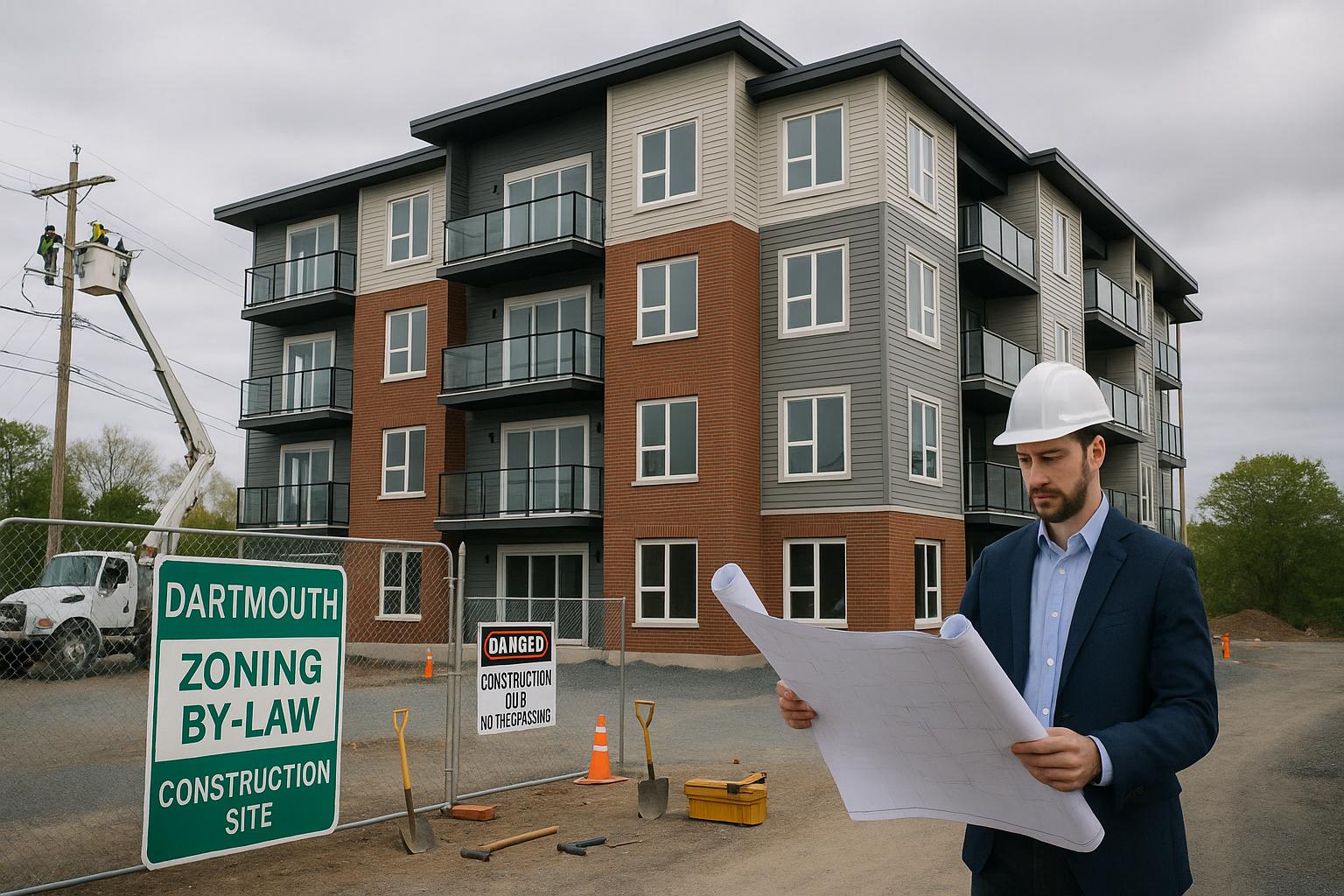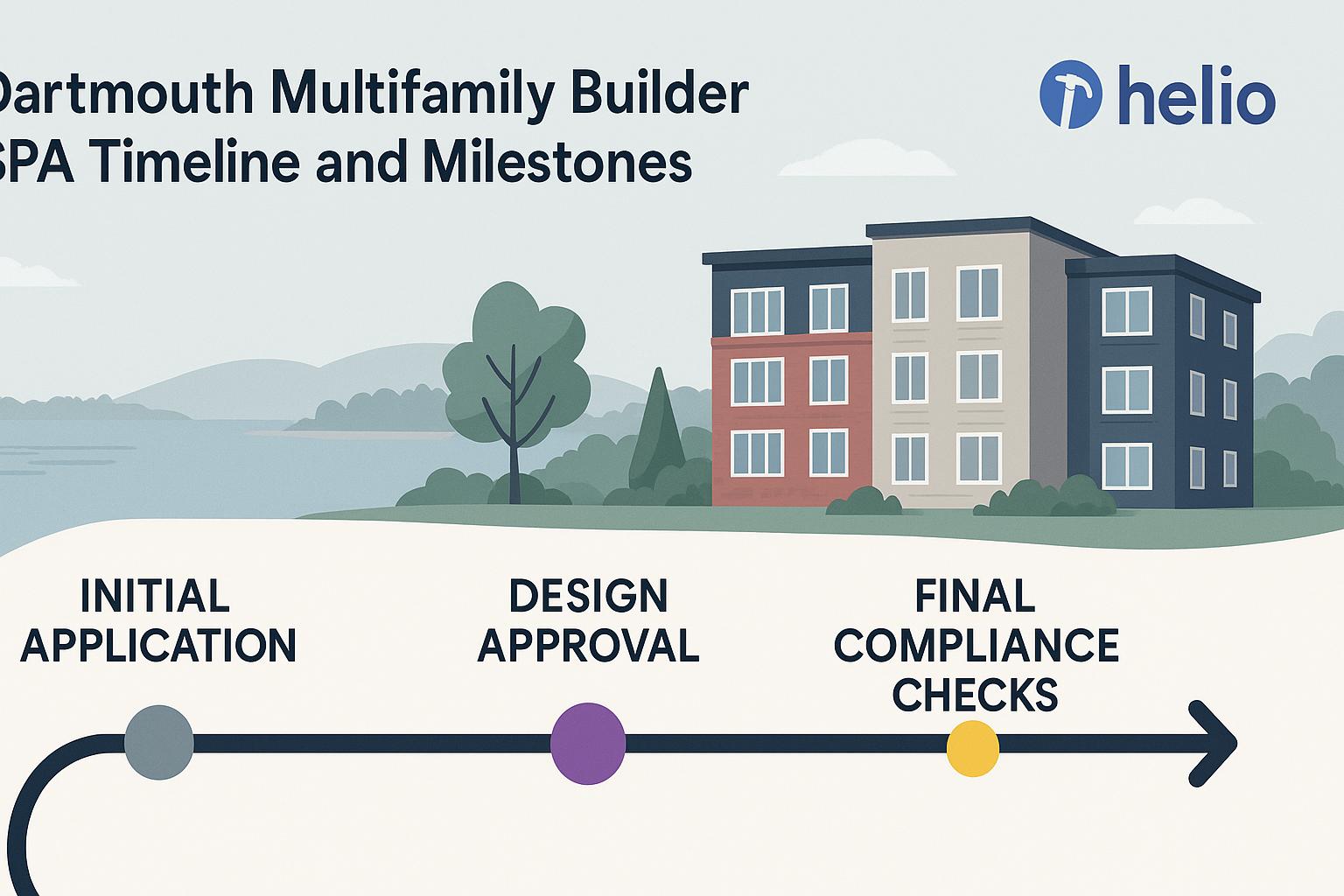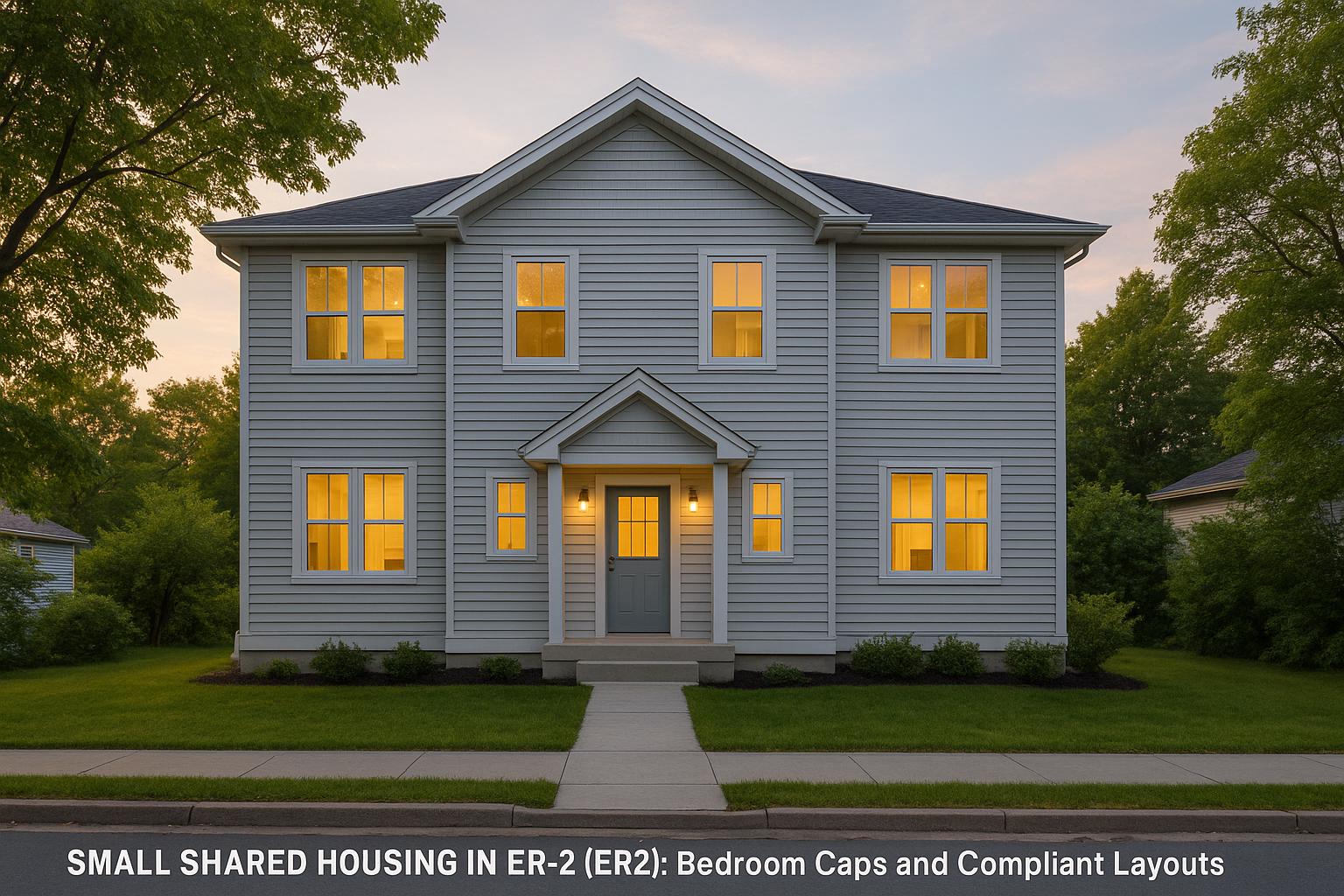Bridgewater faces a housing crisis with rental demand far exceeding supply. Rents average C$1,512/month, requiring an annual income of C$60,480 to afford comfortably. With 79% of homes owner-occupied, renters struggle to find options, especially as population growth and spillover from Halifax tighten the market further. Vacancy rates hover near 0%, creating opportunities for property owners to invest in multi-unit rentals.
Key points:
- Population growth: Up 7.1% since 2020, reaching 15,000 in 2025.
- Government support: Programs like the Housing Accelerator Fund aim to build 365 homes by 2035.
- Financial incentives: Rising rents and property values make multi-unit construction profitable, with projected returns of 12–20% annually.
- Challenges: Zoning laws, rising construction costs, and labour shortages.
For property owners, building now addresses market demand and offers strong returns, especially with integrated design-build methods reducing costs and timelines.
New public housing for Bridgewater, N.S. | SaltWire

Why Property Owners Should Build Multi-Unit Rentals Now
Bridgewater's rental housing crisis has created a rare opportunity for property owners. With vacancy rates hovering near zero and rents steadily climbing, the conditions are ripe for both profitable investments and addressing a pressing community need. Let’s take a closer look at the current market dynamics and the financial incentives that make now the perfect time to act.
What’s Driving the Demand for Rentals?
Bridgewater’s rental market is under intense pressure. The town’s vacancy rate is nearly non-existent - sitting at almost 0% [5]. This has created fierce competition among renters, with demand far outstripping supply. As a result, rents have risen, highlighting the urgent need for more units.
Population growth is another key factor. Bridgewater has seen its population grow by 7.1%, reaching 15,000 residents in 2025, and projections suggest the town will have 10,000 households by 2036 [3][5]. Much of this demand comes from individuals looking for more affordable rental options compared to Halifax’s tighter market.
Adding to the momentum, government initiatives are encouraging developers to build. For instance, the Town of Bridgewater recently secured over C$3.3 million from the Housing Accelerator Fund. This funding aims to fast-track the construction of 100 new homes within three years, with a broader goal of adding 365 homes over the next decade [4].
Why Building in Bridgewater Makes Financial Sense
The numbers speak for themselves. Median apartment prices in Bridgewater are currently around C$300,000 and are growing at an annual rate of 2.1% [3]. Rental rates are strong, with one-bedroom units renting for C$1,512 per month and two-bedroom units going for C$1,650 [2]. A fourplex with two-bedroom units could generate approximately C$6,600 in monthly rental income - or C$79,200 annually.
Property values in the area are also on the rise. Median house prices have grown by 3.5% year-over-year, reaching C$500,000, while apartment values continue to climb at a steady 2.1% annually [3]. This combination of rising property values and robust rental income offers property owners multiple revenue streams.
Here’s a quick snapshot of property prices and growth rates:
| Property Type | Median Price | Annual Growth |
|---|---|---|
| 2-bedroom house | C$400,000 | 3.5% |
| 3-bedroom house | C$500,000 | 3.5% |
| 1-bedroom apartment | C$250,000 | 2.1% |
| 2-bedroom apartment | C$350,000 | 2.1% |
While the financial outlook is promising, it’s important to consider potential construction challenges, such as rising material costs or labour shortages, to fully realize these benefits.
Success Stories and Government Backing
Recent developments in Bridgewater demonstrate the strength of the rental market. In February 2025, the Province of Nova Scotia announced a C$136.4 million plan to build new public housing, including 21 units in Bridgewater slated for completion by summer 2026 [1]. Across the province, a total of 515 new public housing units are planned, combining current and previous initiatives [1].
The Housing Accelerator Fund is also playing a key role, with plans to support 100 new homes in Bridgewater over the next three years and 365 homes within the next decade [4]. These government-backed projects not only validate the market’s potential but also signal strong demand for additional private investments.
Even with these new developments, the rental market remains tight. Over the past year, rents have increased by 1.9%, translating to an average rise of C$30 per month [2]. This continued growth shows that demand is still outpacing supply, offering a stable outlook for property owners who invest in multi-unit rentals.
The timeline for government projects also provides valuable insight. While public housing units in other towns like Glace Bay and Lower Sackville are set to be completed by summer 2025, Bridgewater’s projects - targeted for summer 2026 - leave a clear window for private developers to step in and meet the ongoing demand.
Overcoming Construction Challenges in Bridgewater
Developing multi-unit rental properties in Bridgewater can be a lucrative venture, but it’s not without its hurdles. Construction challenges often eat into budgets and drag out timelines, delaying rental income. However, these issues can be tackled effectively with a well-organized approach.
Common Construction Problems and Risks
Many property owners face recurring obstacles during construction. One major issue is fragmented responsibilities - too many parties involved can lead to miscommunication, disputes, and delays.
Budget overruns are another headache. In Nova Scotia, traditional construction projects often exceed budgets by 30–60%. For example, a fourplex initially estimated at C$640,000 could end up costing far more. This happens because contractors working independently often trigger change orders and unexpected expenses.
Timeline delays are equally problematic. What starts as an 8‑month project can stretch to 18 months or more, with each day of delay costing around C$260 in lost rental income.
"In traditional construction, the project owner assumes the majority of the risk... With the design-build method, the risk is often shared between the owner and the design-build team, providing a more balanced risk distribution." – Stronghold Engineering [6]
These challenges often stem from the traditional multi-contractor model, where separate contracts create inefficiencies and disputes. A more cohesive approach, like the integrated design-build method, can address these problems head-on.
Integrated Design-Build vs Multiple Contractor Approach
The integrated design-build method simplifies construction by combining planning, design, engineering, and building under one contract. This approach creates a unified team with a single point of responsibility, reducing miscommunication and speeding up decision-making.
A Penn State study highlights the advantages of this method: design-build projects are typically 6% cheaper and 12% faster than traditional methods [7]. For a C$640,000 fourplex, that could mean savings of about C$38,400 and a timeline shortened by 2–3 months.
The benefits go beyond cost and speed. With a single point of accountability, the design-build team can quickly resolve issues, keeping the project on track. Collaboration between designers and builders also minimizes errors and reduces the need for costly rework.
| Factor | Traditional Construction | Design-Build Construction |
|---|---|---|
| Timeline | 12–18 months typical | 6–8 months typical |
| Budget Control | Cost-plus, frequent overruns | Fixed-price options available |
| Communication | Multiple parties; coordination issues | Single point of contact |
| Risk Distribution | Owner assumes majority risk | Shared risk |
| Change Management | Complex and expensive | Streamlined process |
Fixed-Price Contracts and Timeline Guarantees
Fixed-price contracts add another layer of security to the integrated design-build approach. With this type of agreement, you know the total cost upfront, which helps eliminate budget surprises and transfers the risk of overruns to the contractor.
Timeline guarantees can further protect your investment. These agreements often include liquidated damages - penalties the contractor pays for each day the project runs late [8]. For example, if your fourplex loses C$260 in rental income daily and the contract includes penalties up to C$1,000 per day, the contractor has a strong incentive to stay on schedule.
The key to making fixed-price contracts work is having a well-defined scope of work. Because an integrated design-build team handles both the design and construction phases, they can provide more accurate pricing and reduce the chances of unexpected costs. Plus, managing a single contract with predictable payments and a guaranteed completion date allows you to focus on preparing your property for tenants instead of worrying about construction hiccups.
These strategies offer a clear path to completing projects in Bridgewater on time, within budget, and with minimal risk.
sbb-itb-16b8a48
Financial Planning and Return Optimization
In Bridgewater's competitive rental market, solid financial planning is critical to making the most of the current housing shortage. Constructing multi-unit rental properties requires a strategic approach to finances, ensuring both profitability and alignment with the town's housing demands.
Construction Costs and ROI Calculations
Understanding construction costs and returns is essential. In Nova Scotia, the cost of building multi-unit properties typically ranges from C$160,000 to C$200,000 per unit, depending on specifications and efficiency. For a standard fourplex in Bridgewater, this translates to C$640,000 to C$800,000 in total construction costs.
Key performance metrics to monitor include cash-on-cash return and overall ROI. Aiming for a cash-on-cash return between 5% and 10% is a reasonable target [10], while some experts suggest an ROI of 8% as a benchmark [9]. When calculating ROI, factor in all expenses - such as closing costs, property taxes, insurance, renovations, maintenance, management fees, and vacancy allowances [11]. A vacancy rate below 2% indicates a strong rental market [16].
To improve long-term property value and justify higher rents, consider strategies like energy-efficient upgrades. These not only attract tenants but can also lower operating costs. Additionally, tax benefits - such as depreciation deductions and operating expense write-offs - can significantly improve your bottom line [10].
Once you have a clear understanding of costs and expected returns, the next step is securing the right financing.
Financing Options for Multi-Unit Construction
There are several financing routes available for multi-unit construction, each with its own advantages. Construction loans, for example, provide short-term funding released in phases as the project progresses [13]. These loans typically cover up to 75% of construction costs and require interest-only payments during the build phase [13]. Down payments for investment properties usually start at 20%, although they can drop to 5% if the owner occupies one of the units [12].
Another option is the CMHC’s MLI Select program, which offers up to 95% loan-to-value financing with amortization periods as long as 50 years [14]. This program is particularly appealing for projects that focus on affordable, energy-efficient, and accessible rental units [14].
Here’s a quick breakdown of financing options:
| Type | Max LTV | Amortization | Interest | Benefits |
|---|---|---|---|---|
| Construction Loans | 75% | Non-Amortizing | Highest | Flexible draws, customization |
| MLI Select | 95% | 50 years | Lowest | Long amortization, high leverage |
| Commercial Mortgage | 85% | 40 years | Medium | Standard terms, quick approval |
The MLI Select program also lowers the debt service coverage ratio requirement to 1.1x [14], making it easier to qualify. CMHC application fees are C$200 per residential unit for the first 100 units [13], which is cost-effective for smaller projects. As of January 2025, Equitable Bank managed C$27.5 billion in insured multi-unit residential mortgages, reflecting a growing appetite for financing such projects [15].
Once your financing is secured, the focus shifts to attracting tenants and minimizing vacancy.
Attracting Tenants and Reducing Vacancy
With Bridgewater's tight rental market, filling units quickly is essential for maximizing returns. Start with competitive pricing - research local rental rates and compare features to set fair, attractive prices. Maintaining strong curb appeal through landscaping and fresh paint can also help draw tenants faster [16].
Modern renters often value energy-efficient features and smart technology, such as upgraded appliances, smart thermostats, and keyless entry systems. These not only appeal to tenants but can also reduce operating costs. Offering flexible lease terms, like six-month options, or incentives such as a discounted first month’s rent or included utilities, can further improve leasing speed [16].
Tenant screening is another critical step. Verify credit, employment, rental history, and references to ensure reliability [16]. Once tenants are in place, effective property management - prompt maintenance responses and open communication - can improve satisfaction, leading to higher lease renewals and positive word-of-mouth referrals.
For new builds, offering rental-ready packages that include appliances, window treatments, and basic furnishings can eliminate common leasing delays, helping you generate cash flow sooner.
Conclusion: Building for Bridgewater's Future
Bridgewater's rental market presents a compelling opportunity for property owners to make a difference while achieving strong financial gains. With the town's population increasing by 7.1% [3], the conditions are ripe for construction. Right now, the cost of buying a home in the area is about 40% higher than renting [20], creating a favourable environment for rental development.
The numbers speak for themselves. Two-bedroom units in Bridgewater currently rent for around C$1,595 per month [18], while construction costs per unit range between C$160,000 and C$200,000. This dynamic allows property owners to achieve annual returns of 12–20% on new multi-unit builds. Even the Town of Bridgewater has acknowledged the pressing need for more rental properties [17], highlighting the urgency of addressing the housing shortage.
However, the window for action is narrowing. Projections indicate a 20% drop in apartment completions by 2025 [20], despite robust household formation continuing to drive demand [20]. Waiting to build could mean missing out on this significant opportunity as competition and capacity constraints tighten.
"Overall, despite some short-duration obstacles, the multifamily market is poised for continued growth as there is an overall shortage of housing, an expensive for-sale market and demographic trends expected to support demand for rental housing." - MF.FreddieMac.com [21]
Financial incentives make the case for building even stronger. Programs like Energize Bridgewater offer 2% interest financing for up to 10 years [19], while the Affordable Multifamily Housing program provides rebates of up to C$16,155 per unit [19]. These initiatives not only reduce construction costs but also support sustainable housing solutions.
"We are working together with Efficiency Nova Scotia to help landlords substantially reduce their building's energy costs while keeping rent affordable for the people living there." - Meghan Doucette, Planner, Energize Bridgewater [19]
Investing in multi-unit rentals in Bridgewater offers a dual benefit: addressing a critical housing shortage while delivering strong financial returns. With median apartment prices sitting at C$300,000 and rising 2.1% quarterly [3], the fundamentals remain solid for long-term growth.
The choice is straightforward. Property owners can either stand by as the rental crisis deepens or seize this moment to build homes that their community desperately needs - all while securing their financial future.
FAQs
What financial benefits make now the right time to build multi-unit rentals in Bridgewater?
Building multi-unit rentals in Bridgewater is a smart move right now, offering great financial opportunities. The town's growing population and strong demand for rentals create the perfect conditions for steady income and long-term property value growth. On top of that, government programs like low-interest loans and energy efficiency rebates can boost your overall returns.
With housing shortages and affordable housing initiatives fuelling demand, property owners have a chance to address these needs while increasing their profits. Moving forward now means you can take advantage of these favourable market conditions before they change.
How does the design-build approach simplify construction challenges for property owners in Bridgewater?
The Design-Build Approach in Bridgewater
The design-build method makes construction in Bridgewater more efficient by uniting design and construction under one team. This early collaboration encourages problem-solving and helps avoid delays, unexpected changes, and miscommunications. The result? Projects that stay on track and within budget.
With everything handled by a single team, property owners enjoy a streamlined process and a single point of accountability. This approach reduces risks and brings more predictability - essential for tackling local construction challenges and addressing the increasing demand for rental properties in the area.
What government programs are helping property owners develop rental housing in Bridgewater?
The Nova Scotia government is tackling the rental housing shortage head-on with a range of initiatives aimed at increasing supply and affordability. One standout program is the Housing Accelerator Fund, launched in 2023. Backed by a $4.4 billion budget, this fund is designed to fast-track housing construction - including rental units - through to 2027.
Another major step is the province's record-breaking $136.4 million investment in public housing. This funding will result in 242 new units being added by the 2025–26 fiscal year, marking a significant expansion of affordable housing options.
To further ease the burden on renters, the Canada-Nova Scotia Targeted Housing Benefit offers rental assistance to those who qualify, making it easier for tenants to find and afford housing. Additionally, a ten-year agreement finalized in 2025 focuses on boosting the housing supply through collaborative efforts between various stakeholders.
These initiatives not only aim to address the housing shortage but also create opportunities for property owners to meet the growing demand for rentals while leveraging government support.



